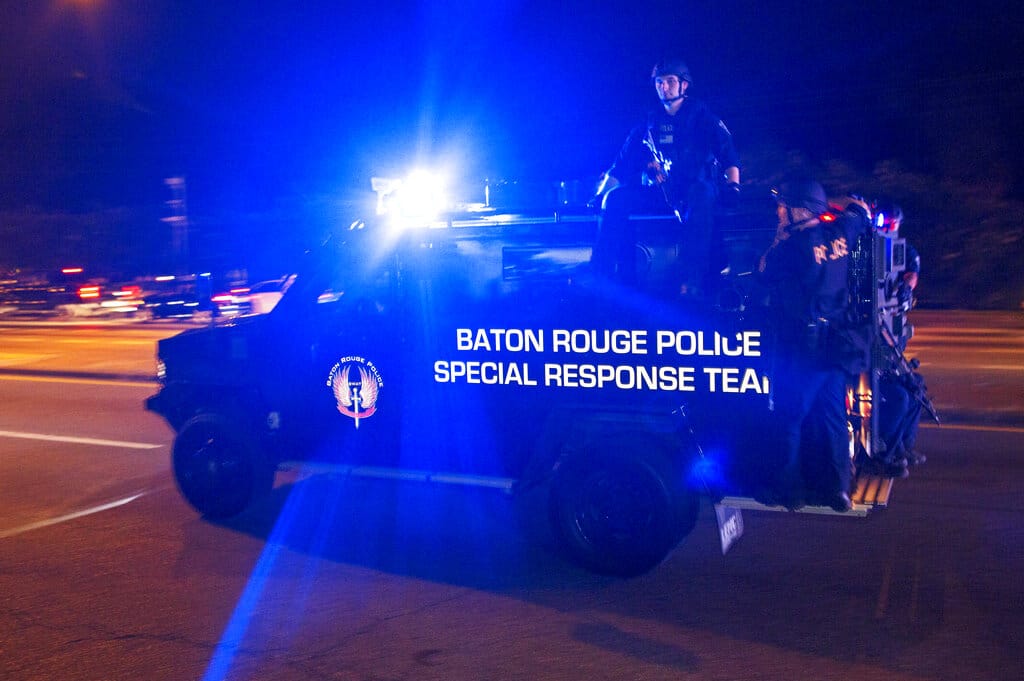A coalition of news outlets has sued in federal court to block a new Louisiana law that makes it a misdemeanor for anyone — including journalists — to be within 25 feet of a law enforcement officer if the officer orders them back, Nieman Lab reported.
The lawsuit alleges that the new law – reportedly the fourth so-called “police buffer law” in the country – violates the First Amendment, including the rights of journalists to gain access to cover events such as widespread protests. Defendants in the case are Louisiana Attorney General Liz Murrill, State Police Superintendent Robert Hodges and East Baton Rouge District Attorney Hillar Moore III.
In 2016, two Louisiana journalists were among a group that filed a suit alleging their constitutional rights were violated when they were arrested during a protest march in Baton Rouge. The city later agreed to pay them $1.17 million.
Images made by those in attendance, including the journalists, were critical in countering the officers’ claims that the protesters were the aggressors, said William Most, an attorney for the plaintiffs. The journalists also felt they were targeted by police for taking photographs.
According to the Nieman article:
“Karen Savage was working for a news site focused on juvenile justice issues on the second day of the demonstrations in July 2016 when she photographed officers putting a Black man in a chokehold as they detained him. Cherri Foytlin, who was working for a small newspaper and a community media project, said she was within four feet when she photographed officers violently dragging a Black man off private property and arresting him.“
Advocates of buffer laws say it’s a matter of public safety in often-volatile situations so officers can do their jobs without being impeded. However, in the Baton Rouge case, the journalists argued that their presence kept police accountable for their actions, and they wouldn’t have been able to capture those images if the law had been on the books during the protests.
Arizona, Florida and Indiana have reportedly passed similar laws.
Editor’s note: This article is based in part on a similar report by TyLisa C. Johnson, audience engagement producer, published on Aug. 6 in the daily Poynter Report e-newsletter produced by the Poynter Institute for Media Studies.
See also:
Filming the Police | The Free Speech Center (mtsu.edu)
Louisiana media outlets sue to block police buffer law | Local Politics | nola.com (includes text of lawsuit)
Gray Media among news outlets suing Louisiana over 25-foot officer buffer zone law (msn.com)
New Louisiana law will criminalize approaching police under certain circumstances | AP News

